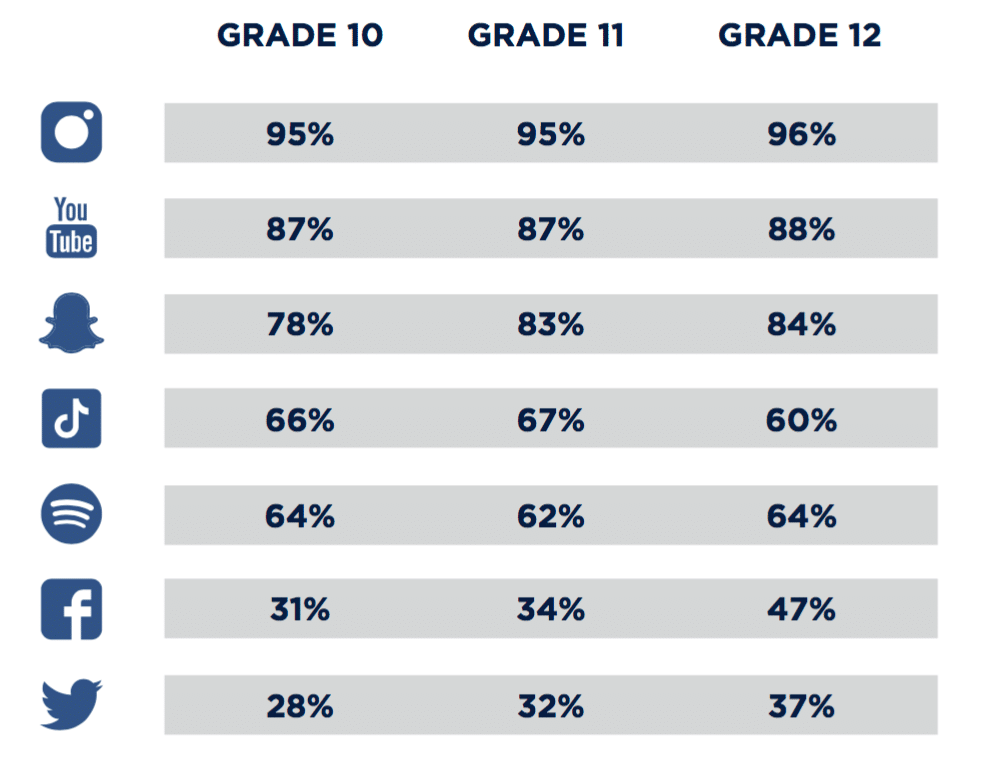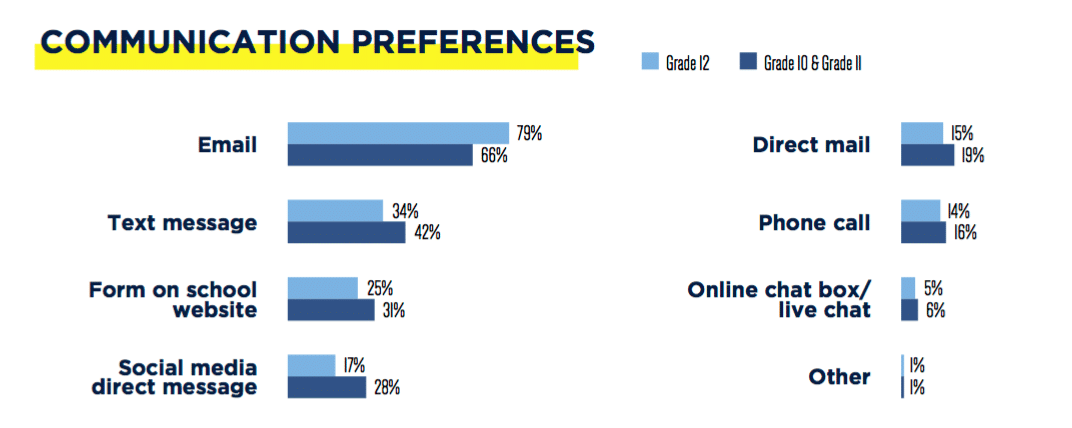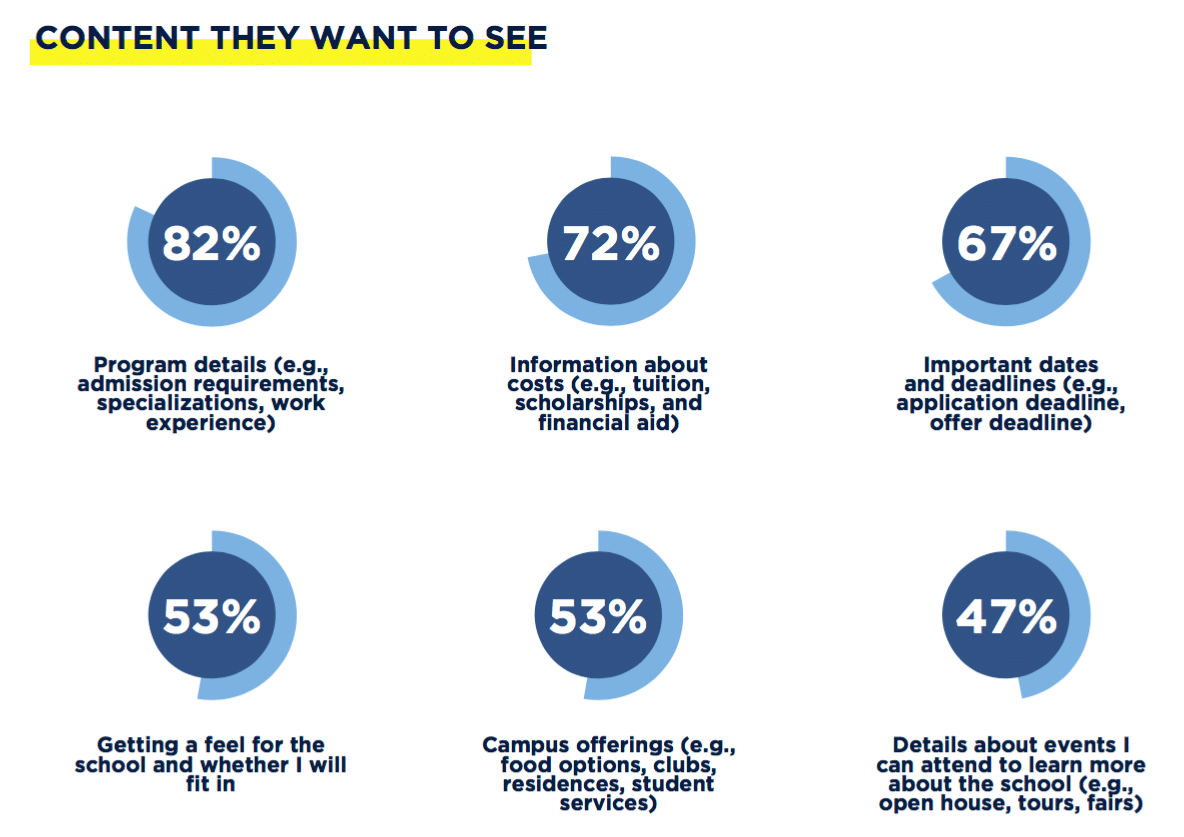COVID-19 has affected many aspects of the higher education student experience—and now is an essential time for marketers to be cognizant of prospective students’ anxiety about what school will look like and utilize the right tools to build trust and connect with students. New research from higher education marketing firm Glacier and Canadian higher-ed consulting firm Academica Group sheds light on Gen Z’s changing social media habits and how they respond to advertising. Specifically, it shows how trust plays a part in making decisions about higher education and how creativity makes a significant impact.
As natives in the digital era, high school students are tuned into the digital world more than any generation before. The online world is a great place to build that relationship. Findings from this year’s report showed that digital advertising remains incredibly effective in reaching this demographic. In the last year, ad recall on social media increased by 15 percent among all high school students. These findings reinforced the existing assumptions that students are consistently accessing social media for communication and entertainment. The top three platforms for Gen Z are Instagram (95 percent), YouTube (87 percent), and Snapchat (82 percent). This year, TikTok emerged as a widely popular platform globally and also in the study. Approximately 65 percent of students using the app, 75 percent of those students using it daily, overtaking YouTube for daily usage.
In terms of traditional marketing mediums, ads and posters within high schools are the best places to be investing advertising dollars. Ad recall among high schoolers for this medium is approximately 57 percent. “The only effective traditional medium to reach high schoolers is ads or posters on walls in high schools,” said Matt Diteljan, CEO of Glacier, in a news release. “Any other form of traditional marketing such as radio, tv, and billboards are a waste of money.”
The study, State of Advertising to High School Students in 2020, showed that social media is popular for communication and entertainment. However, when it came down to making decisions, students looked to their family members (82 percent), friends (81 percent), and teachers for discussions on schools. One of the most interesting findings from this year’s report is that trust is a big part of Gen Z’s decision-making process. The report found testimonials from higher education students or graduates are what prospective students trust the most (51 percent), followed by family members (49 percent) and guidance counsellors (43 percent).
“While only 14 percent of high schoolers talk to a current student, that is who they trust the most,” said Diteljan. “This is an important finding because it lends credence to the necessity of using current students’ stories and content because that is who high-schoolers trust the most.”
COVID-19 is challenging marketers to further stretch their creativity by finding new ways to engage with prospective students to limit physical interaction. While visits and consultations are effective, higher education websites are a critical part of building brand identity with students, with almost 80 percent of students stating that this is where they are looking for information about schools. Investing in a great online experience for high schoolers looking at your institution’s website can convert high school students into applicants. Natalie, a student from Glacier’s round-table discussions, explains, “something I did that didn’t involve physically being there was making a list of what was important to me and looking for places that offered that.”
High-school students identified they are interested in program details (82 percent) (i.e. admission requirements, specializations, and work experience), costs (72 percent) (i.e. tuition, scholarships, and financial aid), and important dates and deadlines (67 percent) (i.e. application and offer deadlines). These three details are critical decision factors for many students, along with the location (66 percent), quality of teaching (65%) and student life on campus (61 percent). Suppose higher education institutions can incorporate these key information points in their marketing. In that case, it will help them avoid critical messaging pitfalls and carry tremendous influence over prospective students.






